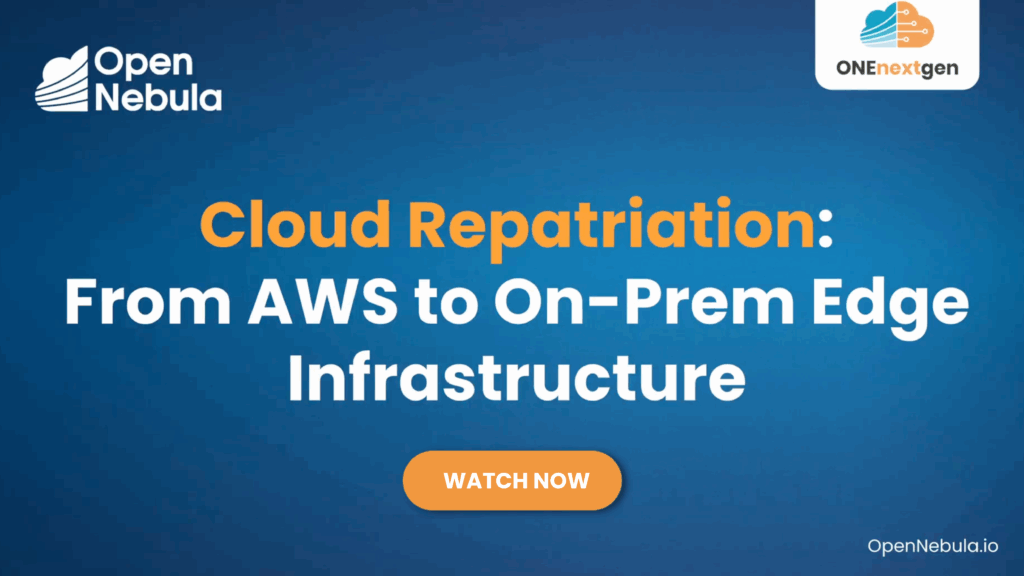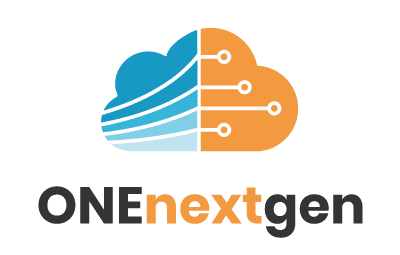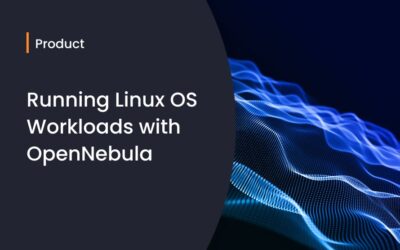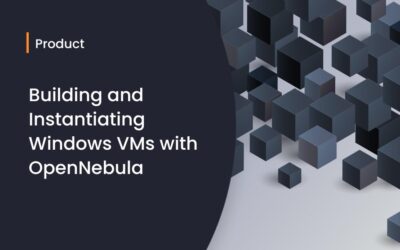As enterprises increasingly adopt sovereign AI processing, edge computing, and solutions for IoT and industrial automation, the strategic shift known as Cloud Repatriation—moving workloads from public clouds back to local, on-premises infrastructure—is gaining momentum. Rising concerns around latency, cloud costs, and regulatory compliance are making edge deployment a compelling alternative. OpenNebula streamlines this transition by enabling the seamless migration of workloads from public cloud platforms like AWS to on-premise edge environments, supporting greater control, performance, and digital sovereignty.
Why Cloud Repatriation Matters in Edge IoT
Public cloud solutions offer initial flexibility and rapid deployment, but as IoT applications scale, critical limitations arise:
- Latency issues: data traveling between edge devices and remote cloud servers introduces delays in decision-making.
- Cost escalation: recurring public cloud expenses grow significantly at scale, especially for data-intensive workloads.
- Compliance complexity: regulations increasingly require local data processing and storage to ensure sovereignty and privacy.
Cloud repatriation—moving workloads back to on-premises or edge environments—effectively addresses these issues by bringing compute resources closer to where data is generated and consumed.
Phoenix RTOS: Optimized for the Edge
Phoenix RTOS is an open source, real-time operating system designed explicitly for industrial and embedded IoT devices. It’s highly optimized, headless (terminal-only), and provides deterministic performance, making it ideal for:
- Smart manufacturing and industrial robotics
- Resource-constrained microcontroller environments
- Time-critical IoT applications.
Its minimal footprint significantly streamlines cloud-to-edge transitions, making large-scale edge deployments straightforward and efficient. Millions of IoT devices—especially smart energy and gas meters—are based on Phoenix RTOS.
Seamless Cloud Repatriation with OpenNebula
OpenNebula significantly simplifies cloud repatriation, enabling workloads like the Phoenix RTOS appliance to move seamlessly from public clouds back to on-premises or edge infrastructures. Leveraging OpenNebula’s advanced hybrid cloud capabilities allows enterprises to operate consistently across diverse environments.
Key advantages include:
- Minimal downtime: live migration moves running VMs from AWS to edge nodes without service disruption.
- Unified management: a single interface manages public cloud and local deployments, ensuring consistency and ease of use.
- Flexibility and portability: identical appliance images work seamlessly across cloud and edge environments.
- Compliance-ready infrastructure: ensures data locality, supporting regulatory and sovereignty requirements.
Watch the Demo: Live Migration of Phoenix RTOS from AWS to an Edge Node
Our screencast demonstrates the simple process of deploying the Phoenix RTOS appliance in AWS and seamlessly migrating it live to an edge node located in a datacenter in Gdańsk, Poland. You’ll quickly see how OpenNebula facilitates zero-downtime migrations, rapid edge-networking configuration, and immediate verification of successful deployment.
Ideal for IT teams pursuing lower latency, reduced cloud costs, and compliance with data sovereignty policies.

To learn more, click here.
Looking Ahead: Enhancing Hybrid and Edge-Native Management
OpenNebula continues to advance its hybrid cloud and edge-native capabilities, delivering enhanced automation, real-time orchestration, and deeper integration with IoT ecosystems. With this foundation, enterprises can confidently pursue a cloud repatriation strategy that optimizes cost efficiency, performance, and regulatory compliance—precisely where these factors matter most: at the edge.





0 Comments